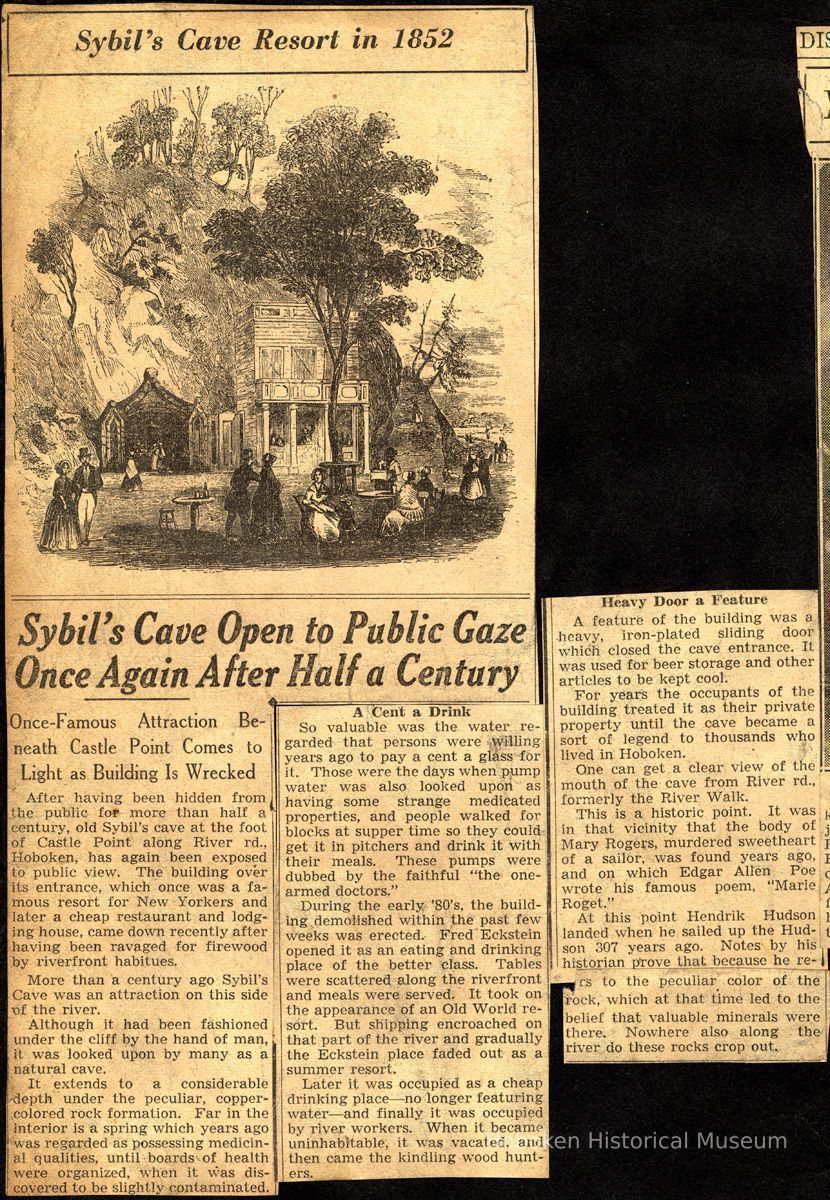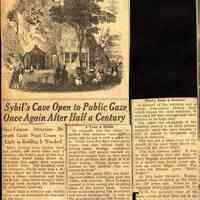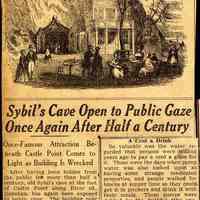Collections Item Detail
Digital image of newsclipping regarding the re-opening of Sybil's Cave, [December, 1937].
2005.078.0231
2005.078
Durstewitz, Anthony & Kathy
Gift
Gift of Anthony & Kathy Durstewitz
n/a
1937 - 1937
Hoboken
Date: 1937-1937
Display Value: Fair Notes: Photos 2005.078.0231 Text of article published in newspaper Hudson Dispatch(?), [December, 1937]. ==== Sybils Cave Open to Public Gaze Once Again After Half a Century Once-Famous Attraction Beneath Castle Point Comes to Light as Building Is Wrecked After having been hidden from the public for more than half a century, old Sybil's cave at the foot of Castle Point along River rd., Hoboken, has again been exposed to public view. The building over its entrance, which once was a famous resort for New Yorkers and later a cheap restaurant and lodging house, came down recently after having been ravaged for firewood by riverfront habitues. More than a century ago Sybil's Cave was an attraction on this side of the river. Although it had been fashioned under the cliff by the hand of man, it was looked upon by many as a natural cave. It extends to a considerable depth under the peculiar, copper-colored rock formation. Far in the interior is a spring which years ago was regarded as possessing medicinal qualities, until boards of health were organized, when it was discovered to be slightly contaminated. A Cent a Drink So valuable was the water regarded that persons were willing years ago to pay a cent a glass for it. Those were the days when pump water was also looked upon as having some strange medicated properties, and people walked for blocks at supper time so they could get it in pitchers and drink it with their meals. These pumps were dubbed by the faithful "the one-armed doctors." During the early '80's, the building demolished within the past few weeks was erected. Fred Eckstein opened it as an eating and drinking place of the better class. Tables were scattered along the riverfront and meals were served. It took on the appearance of an Old World resort. But shipping encroached on that part of the river and gradually the Eckstein place faded out as a summer resort. Later it was occupied as a cheap drinking place---no longer featuring water--and finally it was occupied by river workers. When it became uninhabitable, it was vacated, and then came the kindling wood hunters. Heavy Door a Feature A feature of the building was a heavy, iron-plated sliding door which closed the cave entrance. It was used for beer storage and other articles to he kept cool. For years the occupants of the building treated it as their private property until the cave became a sort of legend to thousands who lived in Hoboken. One can get a clear view of the mouth of the cave from River rd., formerly the River Walk. This is a historic point. It was i in that vicinity that the body of Mary Rogers, murdered sweetheart of a sailor, was found years ago, and on which Edgar Allen Poe wrote his famous poem, "Marie Roget." At this point Hendrik Hudson landed when he sailed up the Hudson 307 years ago. Notes by his historian prove that, because he refers the peculiar color of the rock, which at that time led to the belief that valuable minerals were there. Nowhere also along the river do these rocks crop out. Original or Copy: Digital Copy Status: OK Status By: dw Status Date: 2005-11-12




